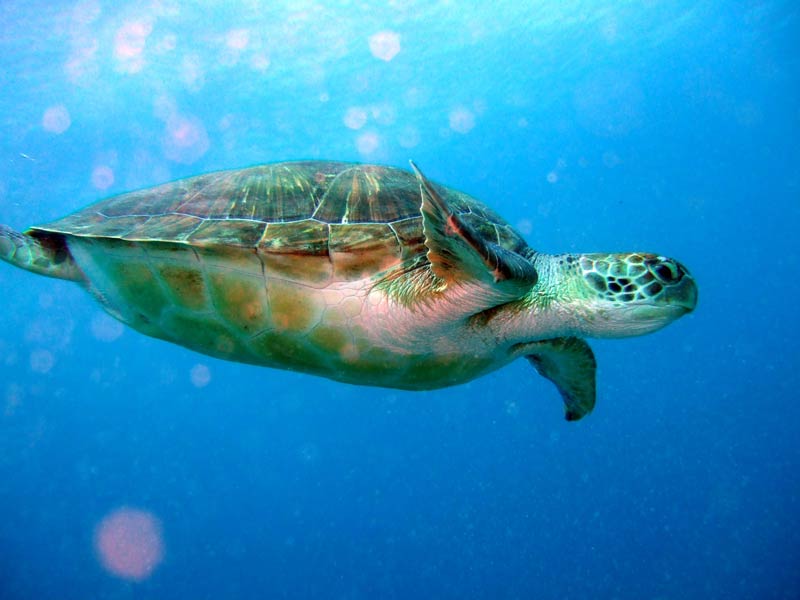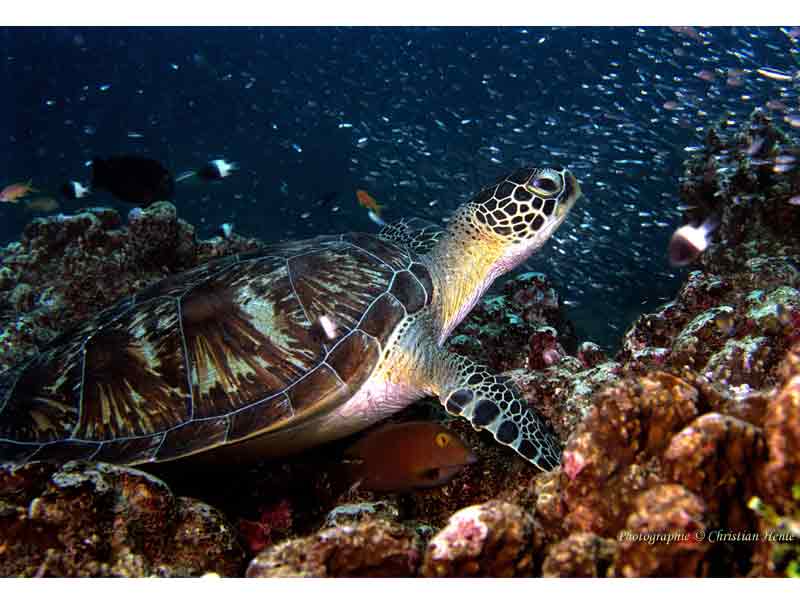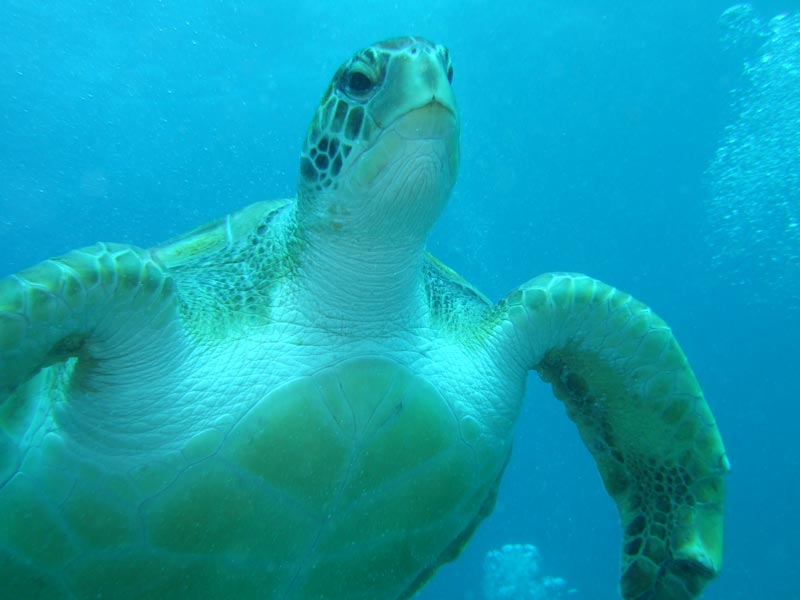Green Turtle (Chelonia mydas)
Distribution data supplied by the Ocean Biodiversity Information System (OBIS). To interrogate UK data visit the NBN Atlas.Map Help
| Researched by | Rebecca Harris | Refereed by | Admin |
| Authority | (Linnaeus, 1758) | ||
| Other common names | - | Synonyms | - |
Summary
Description
Recorded distribution in Britain and Ireland
Records from south and west coasts of England and north-west Scotland and Shetland.Global distribution
-Habitat
Adults inhabit shallow tropical feeding grounds that are often seagrass meadows, migrating from these areas to their nesting beaches not in the UK.Depth range
-Identifying features
- Shell varies from olive to brown, grey and black with swirls and irregular patterns.
- Up to 140 cm in length and weigh up to 180 kg.
- The small rounded head has four pairs of scales (costal scutes).
Additional information
The green turtle is protected form international trade by its listing on Appendix I of the Convention on International Trade in Endangered Species (CITES). Populations of green turtles are in serious decline due to a number of factors. These include loss of nesting habitats, destruction of nests by poachers, propeller wounds, interaction with commercial fisheries and ingestion of marine debris, demand for their eggs and meat for human consumption.Listed by
Bibliography
Anonymous, 1999ii. Marine turtles. Grouped Species Action Plan http://www.ukbap.org.uk/UKPlans.aspx?ID=335, 2001-07-09
Brongersma, L.D., 1972. European Atlantic Turtles. Leiden. Zoologische Verhandlingen.
Costello, M.J., Bouchet, P., Boxshall, G., Emblow, C. & Vanden Berghe, E., 2004. European Register of Marine Species [On-line]. http://www.marbef.org/data/erms.php,
Howson, C.M. & Picton, B.E., 1997. The species directory of the marine fauna and flora of the British Isles and surrounding seas. Belfast: Ulster Museum. [Ulster Museum publication, no. 276.]
Meylan, A., 1995. Estimation of population size in sea turtles. In: Conservation & Biology of sea turtles. Washington & London: Smithsonian Institution Press.
National Research Council, 1990. Decline in Sea Turtles: Causes and Prevention. Washington, D.C: National Academy Press.
Penhallurick, R.D., 1990. Turtles off Cornwall, the Isles of Scilly and Devonshire. Truro: Dyllansow Pengwella.
Seminoff, JA., 2004. Chelonia mydas. In: IUCN 2006. 2006 IUCN Red List of Threatened Species. http://www.iucnredlist.org,
Datasets
Marine Environmental Monitoring, 2018. Marine Turtles. Occurrence dataset: https://doi.org/10.15468/xy69ku accessed via GBIF.org on 2018-10-01.
NBN (National Biodiversity Network) Atlas. Available from: https://www.nbnatlas.org.
OBIS (Ocean Biodiversity Information System), 2025. Global map of species distribution using gridded data. Available from: Ocean Biogeographic Information System. www.iobis.org. Accessed: 2025-08-02
Citation
This review can be cited as:
Last Updated: 03/07/2008





